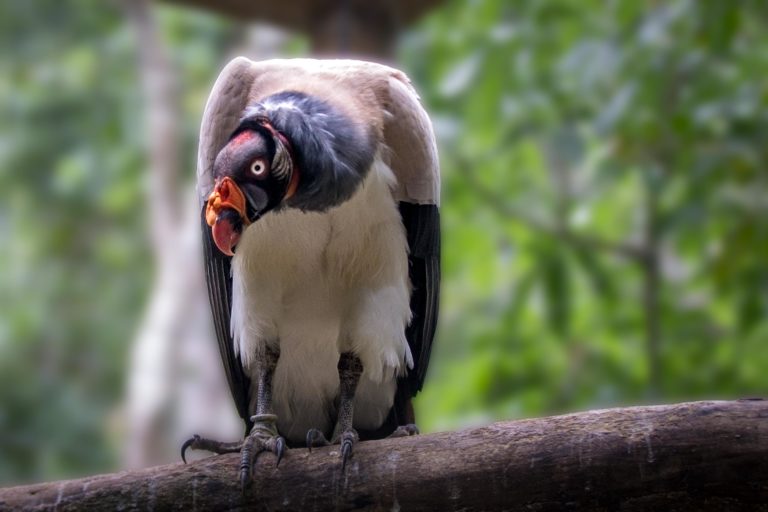King Vulture Sarcoramphus papa
Taxonomy
Scientific name:
Sarcoramphus papa
Family:
Cathartidae
Genus:
Sarcoramphus
Species:
Papa
Common names:
King vulture
Biology
Morphology:
They are mostly white with a slight rose-yellow tinge, though their ruff, flight, and tail feathers range from gray to an opalescent black. They have broad wings and a short, broad, and square tail. Their eyes are straw-colored. King vultures also have a highly noticeable yellow fleshy crest on their orange and black bill. The skin on the neck and head can be many colors, including yellow, orange, blue, purple, and red.
Reproduction:
King vultures are monogamous and mainly breed during the dry season. They usually lay only one egg in a hollow of a tree. Both parents incubate the egg for 32 to 38 days before it hatches. Young chicks are fed directly from the parent’s beak, but as they get older, the parents regurgitate the food onto the ground for the young to eat.
Diet:
The King Vulture feeds solely on carrion. Generally, they only eat the skin and harder parts of the tissue of their meal.
Ecology
Range:
They are found from southern Mexico to northern Argentina.
Habitat:
King vultures live in undisturbed forest in the lowland tropics. Also in savannas and grasslands, but only when there are forests nearby.
Threats
Illegal trafficking, deforestation, even intoxication due to contamination and eating poisoned animals.
IUCN Red List: Least concern.

